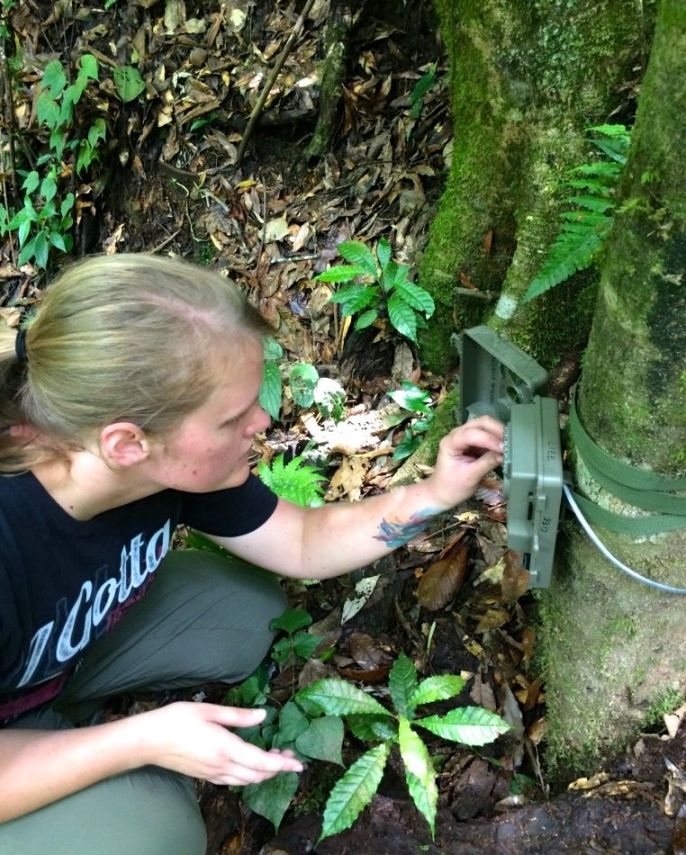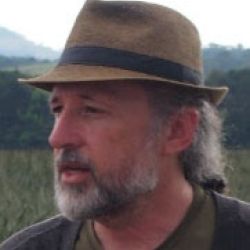Student's Projects, Independent Research In Tropical Ecology (Part 1)
A really important part of the development of a field ecologist is the process of doing research and producing scientific knowledge. Here at our Tropical Ecology & Conservation program our students have the opportunity to experience all the steps a field biologist need to go through while doing research, starting with the writing of a proposal, collecting data in the field, analyzing the data, and ending with a written scientific paper.
The independent research project is one of the highlights of our program where students choose to do a project that fits their area of interest and where they spend many days experiencing the life of a field ecologist. Here are some of the projects our Summer students have been working on in the last few weeks.
Amanda Ogden from Utah State University is measuring the impact of humans on the distribution, diversity, and activity of mammals; to measure this Amanda is using the Monteverde Biological Station as a point of reference for human disturbance and from there noticing the presence of different species of mammals at different distances from the Station, to do this she uses three different methodologies: 1) Camera traps, these are cameras set up in the forest that get trigger to take a picture every time an animal big enough walk in front of them. 2) Fake clay eggs, this eggs made out of clay simulating Quail eggs were set up on the ground and left there for a few days to see if they get predated by any mammals, you can identify the predatory mammals by checking the teeth marks on the eggs. 3) Visual counts, walking on the trails around the station looking for mammals and noticing the points where the species are found. To measure the impact of the Station on the mammals, Amanda did each of the three components of her experiment at different distances from the main building.
Amanda Ogden (Utah State University) setting camera traps as part of her independent research project.
Some of the mammal species caught in the camera traps installed as part of Amanda's research project. A) Agouti (Dasyprocta punctata), B) Coati (Nasua narica), C) Puma or Mountain Lion (Puma concolor), and Tayra (Eira barbara).
Fake clay eggs experiment. A) Showing the location of the fake eggs in the field, and B) showing some of the eggs with teeth marks left by predatory mammals.
Jimmy Webb from the University of Arkansas has the interest of working with medicinal plants, Jimmy wants to measure the anti-bacterial properties of some plants found around Monteverde. To do his experiment Jimmy choose 8 different plant species with supposed anti-bacterial properties and other 8 species where there have been no reports of anti-bacterial activity; extracts of these plants were made using methanol and small discs made out of filter paper soaked on the extracts, once the discs were ready they were placed in petri dishes with growth of two different bacterias Escherichia coli and Staphylococcus aureus, 3 controls were also use for the experiment: discs soaked in just distilled water, just methanol, and an anti-bacterial drops (Dexometasona) found at the pharmacy. The anti-bacterial properties of the plants were measured with the inhibition of the bacterial growth around the discs with extracts placed in the petri dishes.
Jimmy Webb (University of Arkansas) preparing his plant extracts.
Jimmy Webb (University of Arkansas) smearing the Escherichia coli colonies on the petri dishes for its growth.
Preparation of the petri dishes to measure the anti-bacterial properties of different plant species. A) discs with different plant extracts being place on petri dishes with Staphylococcus aureus bacteria, B) after 48 hours of the discs being placed on the petri dishes the inhibition of the bacterial growth can be measure, here in the form of the halos around the filter paper discs.
Related Posts

CIEE Monteverde Campus Used in Insect and Light Research Study
Have you ever wondered why insects are drawn to artificial light? From campfires to porch lightbulbs, moths and other insects appear to congregate around these sources of light as soon... keep reading

Our program through the eyes of a Student
Our Summer student Maddie Beale from the State University of New York at Fedonia wrote a blog about how she found us, the process of choosing our program and the... keep reading

Independent Research Projects: Part I
The Tropical Ecology & Conservation students are working on their independent projects right now, many different ecology topics are being cover that involve both field and lab work. From Leaf-cutting... keep reading



